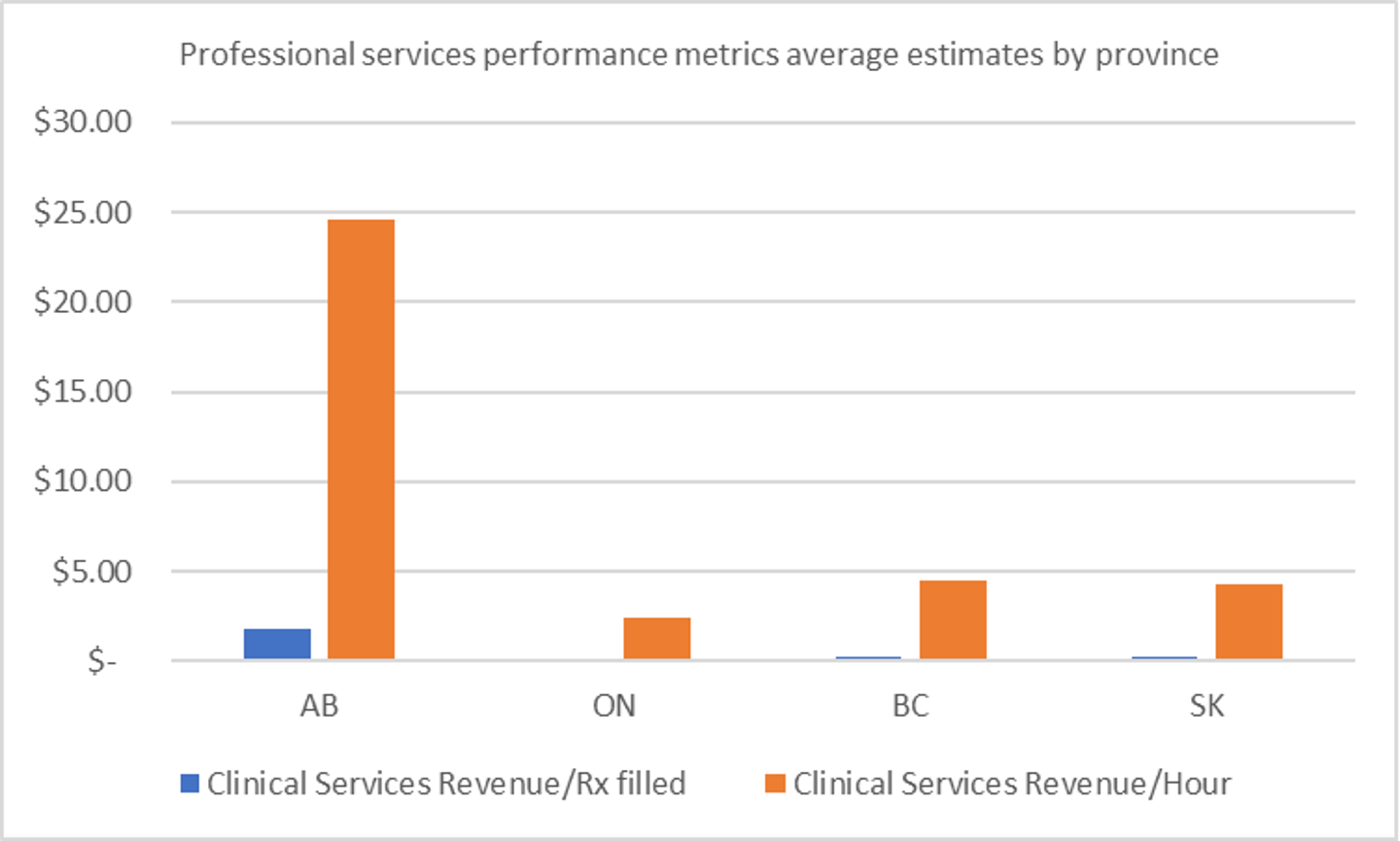Benchmarking your pharmacy’s professional services performance
Over the past decade or so, pharmacists have become ever more critical partners in delivering healthcare to Canadians. One reason for this development is that many provinces now cover under their drug plans at least some primary care services provided by pharmacists – from medication reviews and prescription renewals to chronic disease management, smoking cessation support and immunizations. These professional services have helped make care more available, affordable and efficient, contributing both to a healthier society and to savings for provinces. But how do pharmacists’ businesses benefit from them and, more fundamentally, how do they know they are reaping the benefits?
Benchmarks in your toolkit
This is where benchmarks can be a valuable tool in your management kit. For professional services, there are two relevant benchmarks: revenue per hour of store operation, and revenue per “regular” prescription filled. (Note that the first benchmark should not be used in low-volume pharmacies). Each benchmark has its own strengths and weaknesses, and deciding which one(s) you can use will depend on your pharmacy’s characteristics and your goals.
Revenue generated per hour of store operation ($/hour) can help you assess not only how your pharmacy overall is delivering on professional services, but also how individual team members are performing, because you can break down the metric into day parts and cross-reference who is behind the counter during those times. That might create teachable moments. If certain team members are underperforming, how can you help them deliver services more efficiently? Or are they delivering the professional services, but just not bothering to bill for them? If so, how can you help them manage the paperwork?
The downside to this metric is that it is not very scalable. Smaller operations that fill fewer prescriptions do not deal with enough customers to generate as much revenue from professional services as busier pharmacies do. So, if your pharmacy is filling 10,000 prescriptions per year as opposed to the industry average of about 35,000, $/hour might be a poor benchmark for assessing overall performance, although it could still be useful for identifying staff who need support. A much more scalable metric is revenue generated per regular prescription filled ($/script). A small operation generates lower gross revenue from professional services, but this benchmark accounts for that difference. It applies, therefore, equally well to all pharmacy volumes. Its weakness is that, unlike revenue per hour, it cannot help you assess individual pharmacist performance.
The right benchmark for your pharmacy will depend on your province, your pharmacy’s scale and a host of other factors, including most importantly clinician competence and quality of services. (If your pharmacy is producing clinically sound interventions, then by all means consider these metrics – but not until then.) As the charts below show, there is wide variation across the country in both $/hour and $/script. Note that these are averages for four select provinces (B.C., Alberta, Saskatchewan and Ontario), and we would not recommend using them as benchmarks. At most, they are the minimum performance your professional services should be delivering.
*Compiled from CFP, Statista, Scott’s Directories, EVCOR data, and datacommons.org
In British Columbia ($/script: 0.23, $/hour: 4.53) and Saskatchewan ($/script: 0.26, $/hour: 4.26), the averages are similar, but in Alberta ($/script: 1.78, $/hour: 24.56) those levels of performance just don’t cut it. On the other hand, in high-volume Ontario, the averages for professional services are about 10 times lower than in Alberta, and still well below those for B.C. and Saskatchewan.
Improving your metrics
Once you have established the right metric for your pharmacy, the next question is how to improve it. The first step is to ensure that all your team members (including you) are fully trained on how to provide these services efficiently. As well, many pharmacies fail to ensure all team members are operating fully within their scope of practice. For instance, a pharmacist might not have to do the final check on every script – a regulated technician may be qualified to do so instead, freeing the pharmacist’s time to deliver services. And finally, adopting an appointment-based model, which lets you know precisely when your customer is coming in, can give you time to prepare for professional services delivery, thus making it more efficient.
In our experience working with pharmacists, professional services comprise one of those areas where independent pharmacy owners and managers often operate in the dark. Effective benchmarking is an essential step towards boosting your pharmacy’s performance, and professional services – so often a grey area for pharmacist-owners – is a great place to start.



